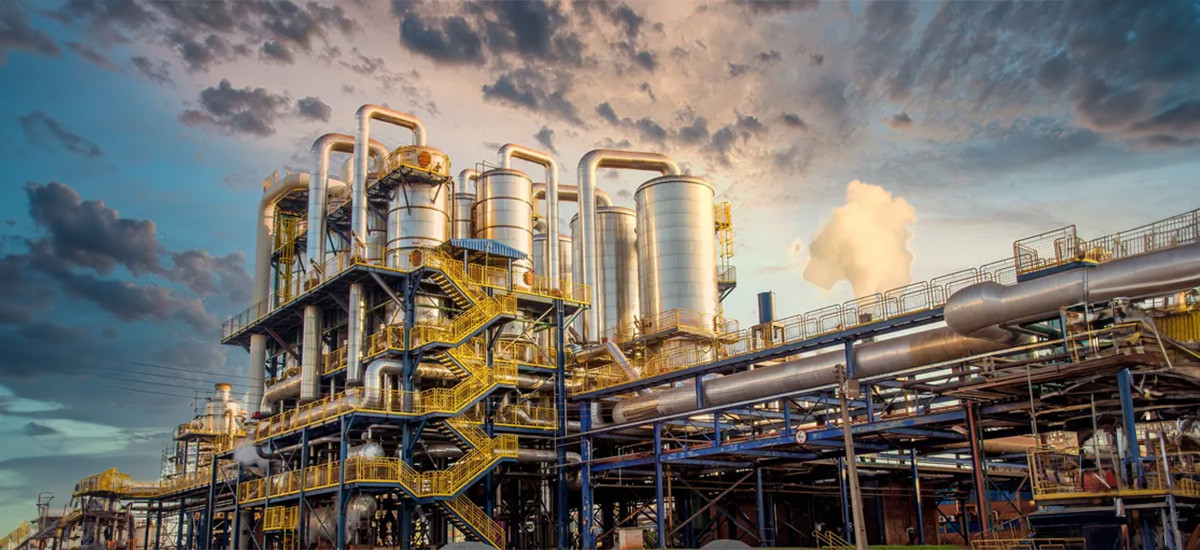23/5/2024
With the increasing population in both Türkiye and worldwide, the demand for production is also proportionally rising, leading to the expansion of production areas such as industrial facilities. These facilities, characterized by continuous production processes, employ various potential fire hazards such as electricity, open flames, and machinery.
Analyzing the fire load of easily flammable materials, as well as flammable and combustible materials produced or stored within industrial facilities, is crucial to assess potential fire risks.
Otherwise, toxic gases that could arise during an industrial facility fire may affect the life of the facility personnel and the living creatures in the environment more negatively than a fire that might occur in all other building types, causing loss of life and great loss of property.
Evaluating the explosion, fire, and toxic spread results of industrial fires, and determining their impact distances are critical aspects that require thorough evaluation. These analyses must be conducted using specialized computer software such as Aloha, etc.
Conducting risk analysis studies in these facilities is essential due to the high concentration of hazardous substances and human activity.
By taking precautions against potential fire risks:
- The spread and damage caused by the heat and smoke of chemical materials used in production facilities will be prevented from reaching and harming the environment.
- Mitigating financial losses and hidden costs associated with production downtime following a fire incident.
- Risk of keeping trained workforce idle or losing them to the competition is minimized.
- Ability to deliver promised products to customers on time and avoid potential prestige losses due to delays.
- By recognizing the shortcomings and taking precautions, insurance premiums will be reduced, and the facility will be well prepared for insurance investigations in the event of a fire.
- Optimizing system selection and reducing equipment and labor costs.
- Streamlining processes for obtaining facility licenses from fire departments or local authorities. (e.g. Permit for roof-mounted solar energy systems).
The primary objectives of conducting risk analysis for industrial buildings include:
- Ensuring compliance with relevant national and international regulations and standards.
- Fulfilling legal obligations outlined in Article 6 of Türkiye’s Regulation on Fire Protection.
- Assessing and potentially upgrading passive or active fire extinguishing systems to accommodate increased production capacities.
- Adapting buildings within the facility to support fire control in the event of repurposing or structural modifications.
- Bringing older facilities into compliance with current regulations or evaluating the adequacy of existing systems.
During risk analysis in industrial facilities, the following aspects are evaluated:
- Architectural, electrical, and mechanical projects of the industrial building.
- Architectural evaluation includes assessing fire compartment requirements, preliminary visual analysis of passive fire safety equipment (Fire doors, fire/smoke dampers, passive fire insulation, etc.), building elements, emergency evacuation procedures, escape routes, firefighting strategies, and intervention possibilities.
- Electrical evaluation involves determining fire detection and alarm system requirements, equipment placement, access to fire control panels, and communication facilities.
- Evaluation of the fire safety scenario and matrices of the building covers the operational ruleset of the detection and alarm systems. Operability and adequacy of the lifesaving equipment are also assessed in this context.
- Mechanical evaluation focuses on hydraulic calculations for fire extinguishing and suppression systems, equipment placement, qualifications, and extinguishing capabilities. Additionally, smoke evacuation system calculations and projects are reviewed.
- On-site inspections assess the alignment of existing projects and field applications, ensuring compliance with regulations and assembly methods.
Key outcomes of risk analysis include:
- Documenting current architectural, mechanical, and electrical fire safety risks of the facility and presenting improvement suggestions based on the facility’s fire load, hazard classification, production methods, material storage, and fire safety systems.
- Prioritizing critical risks to guide client decisions on short or long-term fire safety activities.
- Enhancing production and storage methods while minimizing existing risks.
- Establishing fire compartment requirements to prevent flame and smoke spread to neighboring spaces, ensuring the safety of life and property.
What happens next?
Fire safety risk analysis report shows current shortcomings of the facility, enabling the management to create strategies to tackle them. Some areas may reveal the need for further analysis such as:
- Fire safety function tests, which tests the operational fitness of mechanical and electrical fire safety devices.
- Detailed inspection of passive fire protection equipment, such as fire doors, fire and smoke dampers, fire insulation systems.
- Fire compartmentalization and escape route revision or re-design.
- Revision or re-design of fire detection and fire suppression systems.
- Revision or re-design of fire alarm and/or announcement systems.
From whom should we get this service?
At present, there are no undergraduate courses or state certification programs in Türkiye dedicated specifically to fire engineering risk analysis. Post graduate and doctoral courses for fire safety engineering are present, however field experience is a very important factor for a successful evaluation.
In order to ensure fire safety at this level, it is essential to have a profound understanding not only of national fire regulations and active fire safety systems but also of materials and passive fire safety measures. Efectis, specializing solely in fire for 70 years, offers tailored fire consultancy services. Similar to a tailor crafting bespoke attire, Efectis’ fire consultancy team creates a customized fire concept for each building. With expertise in both national and international standards, they address specific technical fire safety needs.
For more information, please contact turkiye@efectis.com

